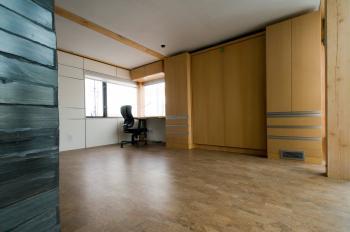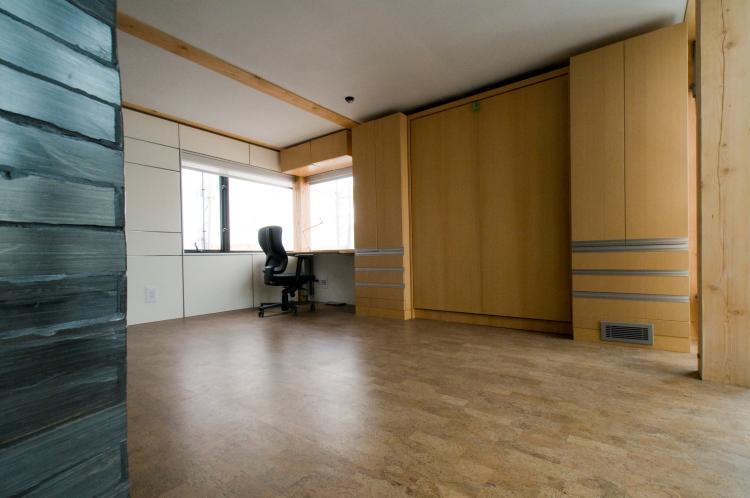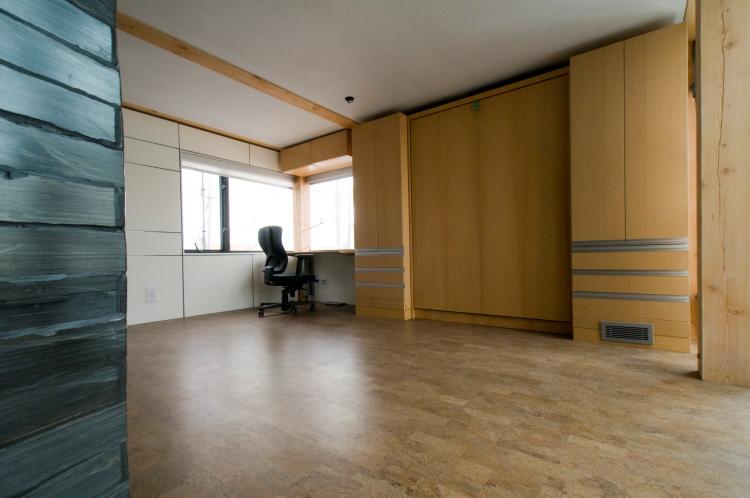VANCOUVER—A solar home built by a team from four Calgary post-secondary schools will be showcased in Vancouver during the 2010 Olympic Games.
But first the home, called SolaBode, will head to the Solar Decathlon in Washington, D.C. on September 22, where it will compete against entries by 20 teams from all over the world.
The team is composed of more than 100 faculty and staff from the University of Calgary, SAIT Polytechnic, Mount Royal University and the Alberta College of Art and Design.
“Our team is probably the most diverse in the world for the competition,” says Mark Blackwell, chair of the Alberta Solar Decathlon Project and a third-year energy management student at the University of Calgary.
Hosted by the U.S. Department of Energy, the prestigious decathlon includes 10 contests in which the entries are judged not only on energy-efficiency, architecture, and engineering systems, but on a “whole whirlwind of disciplines,” says Blackwell.
“A large portion of it is marketability, communications. So we are actually judged on the effectiveness of our website, the effectiveness of our tours, and also the justification of our market viability in the area and how we’re showcasing this house as something that eventually could be rolled out into the mass market in a couple of years.”
Measuring 800 sq. ft., the solar home utilized “a lot of multi-spacing,” he says. “So the bedroom turns into your office area, to your yoga area, and there’s a bed that snaps in the wall.”
The design incorporates the traditional Western Canadian wooden post-and-beam structure, with a south-facing deck and a rooftop patio accessible from inside the home. Reclaimed barn wood was used for the exterior.
The house, which is built in modules, will be transported on four flatbed trucks to get it to Washington, DC. The same method will be used to move it to its temporary location for the Olympics.
During the Games the home will be set up near the Rocky Mountaineer site in Vancouver—a high-profile location from which the Province of Alberta will be taking VIPs from its pavilion to Whistler every morning.
“I think it’s a great opportunity for Alberta, “says Blackwell. “A project like this really showcases some of the research and innovation that’s been going on for all the four post-secondary institutions that are involved.”
After the Olympics, the house will return to Calgary where the next team will continue working on integrating additional renewable technologies such as geothermal technology.
ENMAX, the team’s main sponsor, will also use the house as a testing facility for future solar powered homes. Other sponsors include Western Economic Diversification Canada, Encana and ConocoPhillips.
“We’ve really tried to make it a focus of this team to showcase as much as possible the local suppliers, the local companies, to integrate their innovative products,” Blackwell says.
But first the home, called SolaBode, will head to the Solar Decathlon in Washington, D.C. on September 22, where it will compete against entries by 20 teams from all over the world.
The team is composed of more than 100 faculty and staff from the University of Calgary, SAIT Polytechnic, Mount Royal University and the Alberta College of Art and Design.
“Our team is probably the most diverse in the world for the competition,” says Mark Blackwell, chair of the Alberta Solar Decathlon Project and a third-year energy management student at the University of Calgary.
Hosted by the U.S. Department of Energy, the prestigious decathlon includes 10 contests in which the entries are judged not only on energy-efficiency, architecture, and engineering systems, but on a “whole whirlwind of disciplines,” says Blackwell.
“A large portion of it is marketability, communications. So we are actually judged on the effectiveness of our website, the effectiveness of our tours, and also the justification of our market viability in the area and how we’re showcasing this house as something that eventually could be rolled out into the mass market in a couple of years.”
Measuring 800 sq. ft., the solar home utilized “a lot of multi-spacing,” he says. “So the bedroom turns into your office area, to your yoga area, and there’s a bed that snaps in the wall.”
The design incorporates the traditional Western Canadian wooden post-and-beam structure, with a south-facing deck and a rooftop patio accessible from inside the home. Reclaimed barn wood was used for the exterior.
The house, which is built in modules, will be transported on four flatbed trucks to get it to Washington, DC. The same method will be used to move it to its temporary location for the Olympics.
During the Games the home will be set up near the Rocky Mountaineer site in Vancouver—a high-profile location from which the Province of Alberta will be taking VIPs from its pavilion to Whistler every morning.
“I think it’s a great opportunity for Alberta, “says Blackwell. “A project like this really showcases some of the research and innovation that’s been going on for all the four post-secondary institutions that are involved.”
After the Olympics, the house will return to Calgary where the next team will continue working on integrating additional renewable technologies such as geothermal technology.
ENMAX, the team’s main sponsor, will also use the house as a testing facility for future solar powered homes. Other sponsors include Western Economic Diversification Canada, Encana and ConocoPhillips.
“We’ve really tried to make it a focus of this team to showcase as much as possible the local suppliers, the local companies, to integrate their innovative products,” Blackwell says.






Friends Read Free